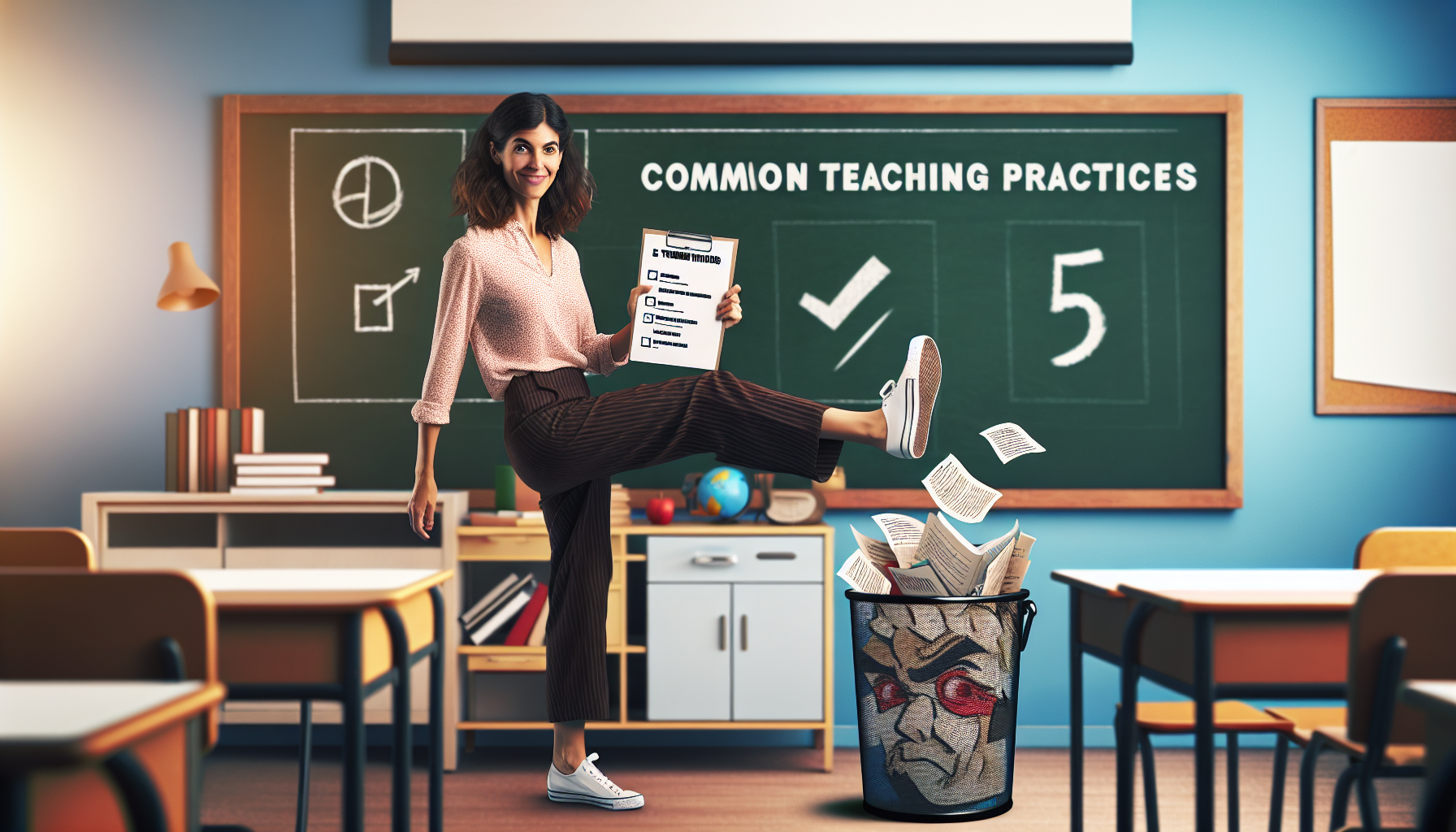For many educators, teaching is not just a job—it’s a calling. It involves crafting experiences that not only impart knowledge but also shape the young minds of future generations. With this noble task comes the responsibility to continuously refine and evaluate teaching methods. In the ever-changing landscape of education, some longstanding practices have been reexamined, revealing that they may not be as beneficial as once thought. In this exposition, we will delve into a quintet of traditional teaching techniques that this educator is abandoning in favor of more innovative and effective strategies.
Traditional Homework Assignments
The standard practice of assigning nightly homework has been a mainstay in education, with the intention of reinforcing classroom learning. However, more and more studies are suggesting that this method does not always yield the expected outcomes in terms of student achievement. Excessive homework can lead to
Alternatives to Traditional Homework
Rather than assigning arbitrary tasks, I’m focusing on
- Project-based assignments that challenge students to solve complex problems.
- Reading assignments that are followed by discussion rather than rote comprehension questions.
- Flipped classroom models where the groundwork is laid at home, making classroom time available for active learning and collaboration.
Lecture-Based Learning
Lengthy lectures have been the cornerstone of traditional teaching methods for ages. This approach to instruction maintains that students absorb knowledge best through listening and taking notes. However, this one-size-fits-all strategy can be uninspiring and may fail to engage those with different learning styles. Recognizing this, my focus has shifted towards more
Embracing Interactive Learning
To replace lecture-heavy sessions, I’ve adopted a range of interactive strategies, which include:
- Implementing group discussions to encourage exchange of ideas and foster a collaborative learning environment.
- Incorporating multimedia resources such as videos and interactive software to cater to visual and auditory learners.
- Utilizing technology-enhanced learning tools that allow for immediate feedback and tailored instruction.
Overemphasis on Standardized Testing
Standardized tests have been deeply embedded into the fabric of education systems worldwide. The goal of these exams is to measure student comprehension and compare educational performance across a spectrum. Nonetheless, an
Comprehensive Assessment Strategies
I have begun integrating a spectrum of assessment strategies to gain a more holistic understanding of student achievement. These include:
- Formative assessments through quizzes and interactive activities that provide immediate insights into students’ learning progress.
- Authentic assessments, such as portfolios and presentations, which allow students to demonstrate their learning in diverse ways.
- Peer assessments and self-reflections that empower students to critique and understand their own learning journeys.
One-Way Communication
In the traditional classroom setting, the flow of information typically goes from teacher to student, often inhibiting a genuine dialogue. The potential for rich interaction and deeper understanding can be stunted when students are mere passive recipients of information. I firmly believe that education should be a
Facilitating a Dialogue
Active listening to student opinions and inviting questions to foster a dialogue-centered classroom.- Creating an environment where students feel comfortable sharing ideas without fear of judgement or incorrect answers.
Socratic seminars and other discussion-based formats that place students at the center of the conversation.
Rigid Classroom Structure
The notion that learning can only occur within the four walls of a classroom is outdated. A rigid classroom structure can hinder the exploration and natural curiosity that are hallmarks of deeper learning experiences. Therefore, I am exploring
Creating Flexible Learning Spaces
My classroom is evolving into a flexible space that includes:
- Arranging movable desks to facilitate group work or individual study, depending on the day’s activities.
- Incorporating elements of nature and comfort to create a more inviting learning atmosphere.
- Utilizing outdoor spaces and local community resources to extend the classroom beyond its physical boundaries.
As an educator, it’s my privilege and duty to provide the highest quality education to my students. By carefully reconsidering these five common instructional methods, I am committed to crafting a learning experience that is inclusive, engaging, and thought-provoking, preparing students not just for tests, but for life. The journey of learning is ongoing and requires educators to stay vigilant and adaptive. Together with my students, I am excited to embark on this path of continuous improvement and discovery.
